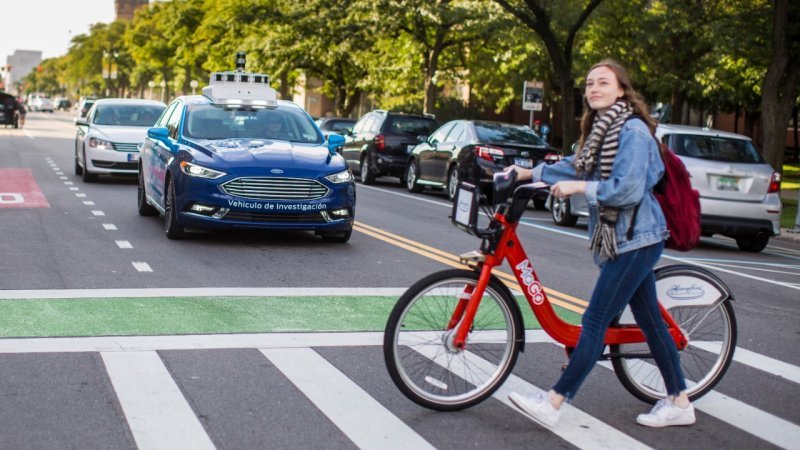Ford calls for industry standard signal for self-driving vehicle intent

Ford on Tuesday put out the call to developers of self-driving vehicles to help build a new industry standard interface to help communicate the intent of autonomous vehicles to passengers, pedestrians and other drivers sharing the road.
In a blog post published on Medium, Ford said it's made its own work in the area available to other teams through a memorandum of understanding, meaning essentially that it wants to open-source the development of a new universal AV communications interface.
"We want everyone to trust self-driving vehicles — no matter if they are riders in these vehicles themselves or pedestrians, cyclists, scooter users or other drivers sharing the road," John Shutko, Ford human factors technical specialist for self-driving vehicles, wrote in the post. "Having one, universal communication interface people across geographies and age groups can understand is critical for the successful deployment of self-driving technology."
The move builds on real-world research Ford undertook with Virginia Tech Transportation Institute starting last year in which engineers mounted a light-bar to the top of the windshield of a Ford Transit Connect van, with drivers essentially disguised as seats to simulate the van operating on its own to see whether the signals were effective. It used three different lighting scenarios: two white lights moving side to side to designate the vehicle was yielding and about to stop; a solid white light to indicate the vehicle was proceeding on its current course; and a rapidly blinking white light to communicate that the vehicle was about to accelerate from a stop. Ford outfitted the Transit Connect with multiple cameras to record video from every direction to gauge people's reactions over the course of more than 2,000 miles of testing.
It also conducted a study using virtual reality in which participants were placed at a street corner to observe a complex mix of vehicles passing through an intersection, some with the intent-interface light signals and some without.
Ford says it plans to take what it's learned and equip the self-driving intent interface on a fleet of autonomous Fusion Hybrid development vehicles to be used by Argo AI in and around Miami for more testing. Research is also under way in Europe "so we can ensure they are universally understood across regions and cultures."
The automaker is also working with the International Organization of Standardization, or ISO, and the Society of Automotive Engineers to create a unified communication interface for AVs. The goal is to reach agreement over where to place the signals on a self-driving vehicle, how to design the signals, and what colors the signals should be.
Related News
